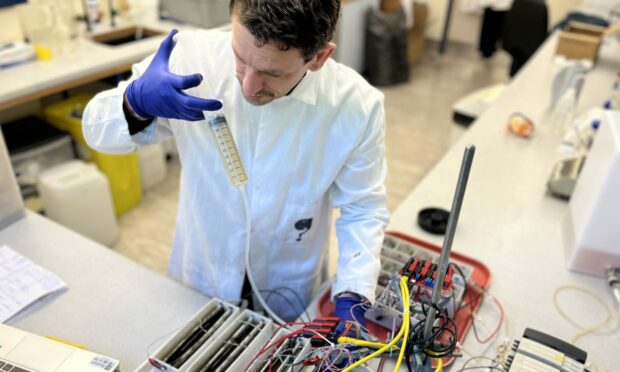Scientists in Aberdeen have been collecting their colleagues’ urine as part of a study that could help reduce energy use.
The James Hutton Institute in Aberdeen has had a new urinal installed, with staff encouraged to spend a penny in the name of wastewater science.
Urine is being collected to help develop a wastewater treatment technology using power-producing common microbes.
More than 11 billion litres of wastewater is treated at about 9,000 sewage treatment facilities in the UK, many of which use energy intensive processes that emit greenhouse gas emissions, including methane and nitrous oxide.
But by putting the microbes used to munch through wastewater contaminants into an electrical circuit, Hutton researchers have shown that those greenhouse emissions could be halved, while also producing power.
This could be especially beneficial in rural areas, where achieving the same cut in greenhouse gas emissions would otherwise require significant investment.
It could also help save energy in cities.
What could be powered?
A form of the technology has already been trialled to power lighting in a toilet block at an isolated school in Africa.
It has also been trialled over several years at Glastonbury Music Festival, using festival-goers’ urine.
Dr Xavier Walter is leading the experiment at the James Hutton Institute and needs about 3.3 litres of urine a day – prompting the installation of the urinal.
He said: “An estimated 1-3% of the UK’s electricity production is used in wastewater treatment, mostly in cities where the wastewater has to be aerated.
“We could potentially decrease this consumption significantly by using the natural electro-chemical capability of microbes to self-power the process.
“In large cities, where urban farming is becoming more popular – and necessary – we could replace more energy intensive treatment processes and also tweak the process to draw off nitrogen that can be used as fertiliser.”

